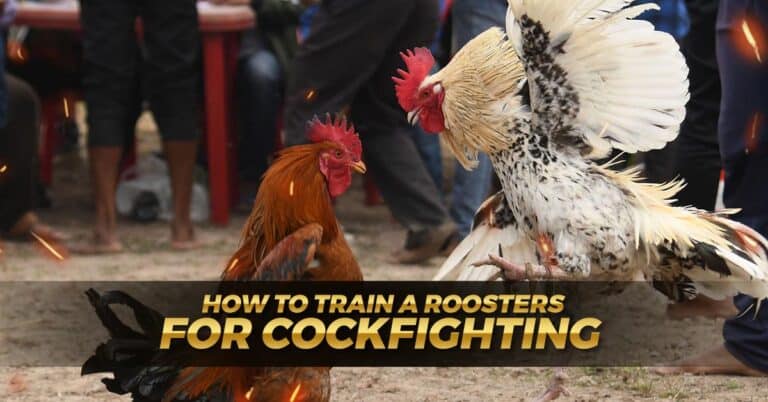Gamefowl Brooding and Keeping for Chick Management
Comprehensive Gamefowl Brooding Practice
Sabong International helps your newborn gamefowl brooding initial residence will be a chicken brooder. Chicks will survive and thrive for the first weeks.
You should set up your brooder a few days before your chicks come so that all the kinks are sorted out before use and you can enjoy your new kids when they arrive. A complete list of brooder materials is provided below, along with instructions on how to set it up and an explanation of each item’s purpose and importance to your new clutch.

Setup of Brooder
Having located the ideal location for gamefowl brooding, put everything in place, clean feeders, waterers, and other components of your brooder.
(1 part bleach: 9 parts water makes a good disinfectant).
Place the Brooder Guard or the sterilized container of your choice on a solid surface or the floor. Look for any potentially dangerous objects or sharp edges. Lay your bedding out next, 2 to 3 inches thick.
Useless to use newspaper. It is slick and can harm the delicate legs of your chickens! The use of pine wood shavings is recommended since other forms of wood shavings may be hazardous. Your best option is pine shavings. If you’d rather use something different than pine shavings as bedding, sand, and corn cobs are both suitable substitutes. All of these are excellent for gloomy spaces.
Establish Your Brooder
In your newly bedded brooder, position the feeder(s) and waterer(s) away from the area where the heat source will be. A thermometer should be placed at chick height, a few inches from the brooder’s bottom. This will give you a more accurate reading of your brooder’s temperature. Your heat lamp should be either hung above the brooder or clamped to the side, at least 18″ away from the bedding.
Make sure there is enough space in the brooder for your chicks to both enjoy and escape the heat. Your lamp’s height can be changed to alter the temperature. 90 to 95 degrees Fahrenheit is an excellent starting point. Until the temperature reaches 65–70 degrees, turn down the heat by 5-7 degrees per week.
Simple observation of your chickens’ behavior is the easiest technique to determine the temperature in the brooder. They become cold if they cluster under the heat source. They are heated if dispersed throughout the brooder and motionless, even panting. A group of chirping, energetic chicks that are dispersed across the brooder are content.
Put Brooder Guard around your brooder container if it is shallow. This will stop any drafts from chilling your birds and costing you money. The time has come to put your chicks in the brooder!
Things to Look Out For When Brooding:

Water
Water is the second most crucial element for your chicks after heat. We advise mixing a vitamin-electrolyte solution, such as Meyer Hatchery’s Vital-Pack, in the new chicks’ water. To help the chicks find the water, you might need to dip your beak into the trough. Typically, once a few birds begin drinking, the others will do the same.
When chicks fall into the water trough, they can drown or freeze to death. This can be avoided by giving the birds plenty of room, avoiding placing a heat source directly over the water and utilizing waterers with smaller troughs. If you want to make the water shallower, you may easily add clean rocks, marbles, etc.
Feed
Because the protein and components will differ depending on the species of bird you are raising, use poultry feed designed for that species. Starting at 3–4 weeks of age and continuing until 10–12 weeks, starter grit can be given. Grit for growers can be utilized after 10 to 12 weeks. Adding a few flashy objects to their diet, such as marbles or pocket change, will entice reluctant chicks to start eating.
Feeding Guidelines for Chicks and Bantams:

Maintaining Gamefowls Bloodline
Single Mate
You must be able to name both sets of parents with absolute certainty. It’s your never-ending task to identify these individuals in your flock because most great families credit their brilliance to a select group of exceptional people. We are aware of no other method other than single mating to do this.
Keep Monitoring Accurate
Regarding your matings, the kids they give birth to, and how each of these offspring performs. This will be your tool for assessing every single mating and determining whether to continue it or not. Making informed breeding decisions is impossible without accurate records. A WARNING: If you track your poultry using a computer application, make carefully back up that information every time you change it on a disk because if your computer fails (which happens from time to time), that information can become permanently inaccessible.
Do Not Produce New Matings Annually
Keep a top-producing pair together for as long as you can after finding them before venturing out and mating with other people. Depending on how old they were when you started with them, a good pair should continue to yield for at least five years.
To care for their progeny, you will need more space and pens, so keep in mind that any fresh mating you arrange will need to pass the same inspection. Therefore, carefully consider the number of matings based on the resources you have available and the outcomes you aim to attain.
Plan To Replace A Safe Quantity
Disaster often seems to be just around the corner when dealing with game fowl. Because of this, once you identify your top-producing couples, it is a good idea to maintain at least a few male and female offspring from each of them, even though you might not breed these kids for a few years.

What you can do is swap these out for the kids of these pairs in the following years, giving you a few pretty young people to use and preserve their bloodline. Many good-producing individuals’ bloodlines are lost because their owners neglected to plan and did not save any of their kids (since they were not going to breed them at the time), lost the hen or cock for a variety of reasons, and were thus unable to continue with that pair.
Identify The Breeding Method that Suits You
Most of you are aware that there is inbreeding, linebreeding, infusing, crossbreeding, and a host of other practices. Depending on the objectives you’ve set for your breeding program and your capacity to make wise decisions, you’ll have to decide which of these to use. Again, in this situation, keeping accurate records will prove to be a useful tool in determining which particular fowl’s blood should be used to continue and enhance the performance of the family.
Conclusion
Today’s industry considers each of these gamefowl Brooding fundamentals to be standard practices for brooding chicks. Each has developed and improved over time.
It is not just the greatest but the only way to give your chicks the “lift-off” they require to develop into a top-performing flock to use the tools and equipment available to follow these fundamental processes.
Today, monitoring chicken production by the hour rather than the day is the norm. In the flock, mistakes made in the first 72 hours cannot be corrected later. At catch time, gamefowl brooding that has been done well has paid off.










